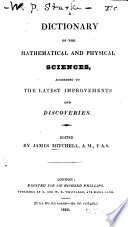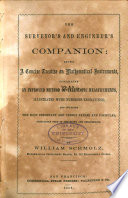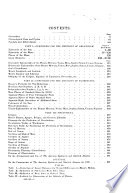 Solar time is that used for all the purposes of ordinary life, and is measured by the daily motion of the sun. A Solar Day is the interval of time between two successive transits of the sun over the same meridian; and the hour-angle of the sun is called... Solar time is that used for all the purposes of ordinary life, and is measured by the daily motion of the sun. A Solar Day is the interval of time between two successive transits of the sun over the same meridian; and the hour-angle of the sun is called...  The American Ephemeris and Nautical Almanac - Page 563by United States Naval Observatory. Nautical Almanac Office - 1906Full view The American Ephemeris and Nautical Almanac - Page 563by United States Naval Observatory. Nautical Almanac Office - 1906Full view - About this book
 | James Mitchell - 1823 - 666 pages
...determined. DATUM, the singular of data. DAY, in Astronomy t is that portion of time which elapses between two successive transits of the sun over the same meridian ; and the hours are counted from one period to another, from one to twentyfour. Mean Solar DAY. The solar day... | |
 | Olinthus Gilbert Gregory - 1848 - 572 pages
...Common Year. Leap Year. Julian Year. Solar Year. Sidereal Year. A solar day is the time that elapses between two successive transits of the sun over the same meridian, and is not alwavs of equal duration, being longer at some seasons of the vear than at others; the difference... | |
 | Edward Charles Frome - 1850 - 294 pages
...astronomical purposes are the apparent solar, mean solar, and sidereal day. The apparent solar day is the interval between two successive transits of the sun over the same meridian ; and from the path of the sun lying in the ecliptic inclined at an angle to the equator upon the poles of... | |
 | William Schmolz - 1859 - 196 pages
...Time. — Solar Time is measured by the daily motion of the sun. A Solar Day is the interval of time between two successive transits of the sun over the same meridian ; and the hour angle of the sun is called Solar Time, This is the most natural and direct measure of time. But... | |
 | Henry Evers - 1873 - 152 pages
...declination passing over the place of the mean sun. 50. Apparent Solar Day. — An apparent solar day is the interval between two successive transits of the sun over the same meridian. 51. Apparent Time is time measured and indicated by the apparent or true sun. It may also be defined... | |
 | Alfred Wilks Drayson - 1874 - 346 pages
...revolution, the star will be brought on once oftener. We define a solar day as the interval of time between two successive transits of the sun over the same meridian, and a siderial day as the interval between two successive transits of a star over the same meridian, and... | |
 | 1885 - 478 pages
...exhibited on the various dials throughout the Observatory, and finally for its public distribution. The interval between two successive transits of the Sun over the same meridian is the solar day, which day varies in length, first by reason of the unequal apparent motion of the... | |
 | 1885 - 500 pages
...exhibited on the various dials throughout the Observatory, and finally for its public distribution. The interval between two successive transits of the Sun over the same meridian is the solar day, which day varies in length, first by reason of the unequal apparent motion of the... | |
 | United States. Congress. House - 1885 - 558 pages
...ordinary life, and is measured by the daily motion of the sun. A Solar Day is the interval of time between two successive transits of the sun over the same meridian; and tho hour-angle of the sun is called Solar Time. This is the most natural and direct measure of time.... | |
 | James Edward Oliver - 1889 - 178 pages
...declination is 23° 27' s., the day is shortest in north latitudes, and the night longest (winter solstice). The interval between two successive transits of the sun over the same meridian is an apparent solar day. This interval varies, from two causes : the obliquity of the ecliptic, and... | |
| |